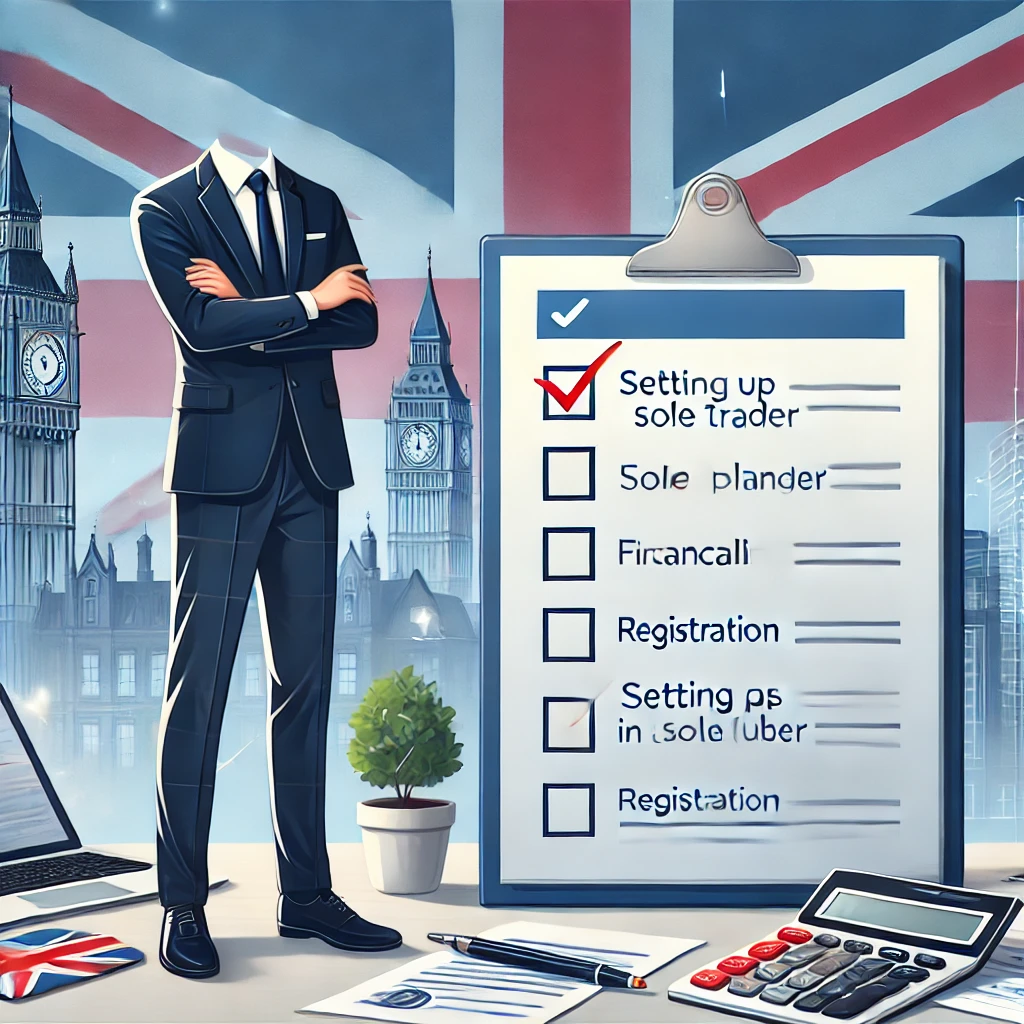
Setting up as a sole trader in the UK is a straightforward process that allows you to run your own business with minimal administrative hurdles. Here's a step-by-step guide to help you embark on your entrepreneurial journey
Before diving in, it's essential to establish whether your side hustle or business activity is considered a trading activity. HMRC uses "badges of trade" to assess this. with the primary indicator being a profit motive. If you're engaging in activities with the intention of making a profit, it's likely deemed a trade.
You have the flexibility to trade under your own name or select a unique business name. If you opt for a different name, ensure it doesn't:
✔ Include sensitive words or expressions without permission.
✔ Imply a connection with government or local authorities.
✔ Infringe on existing trademarks.
To protect your chosen business name, consider trademarking it.
If you earn more than £1,000 from self-employment in a tax year (6 April to 5 April), You're required to register for Self Assessment to report your earnings and pay Income Tax and National Insurance contributions. You should complete your registration for Self Assessment by 5 October following the end of the tax year if you have to send a tax return and you have not sent one before.
After registering, HMRC will send you a Unique Taxpayer Reference (UTR) by post, typically within 10 days (21 days if you're abroad). This number is crucial for managing your tax affairs.
Each year, you'll need to file a Self Assessment tax return:
✔ Online Returns: Due by 31 January following the end of the tax year.
✔ Paper Returns: Due by 31 October following the end of the tax year.
Late submissions can result in penalties, so it's essential to adhere to these deadlines. Many sole traders seek professional guidance to avoid errors that could lead to unnecessary tax liabilities.
While not legally required, having a separate business bank account can help:
✔ Keep your personal and business finances distinct.
✔ Simplify accounting and tax return preparation.
✔ Ensure all business expenses are accurately captured.
Depending on your business activities, you might want to explore insurance options:
✔ Public Liability Insurance: Essential if you interact with customers or the public.
✔ Professional Indemnity Insurance: Important if you provide advice or professional
services.
✔ Income Protection Insurance: Provides a safety net if you're unable to work due to
illness or injury.
Keeping detailed records is vital for:
✔ Tracking your business's financial performance.
✔ Supporting figures in your tax returns.
✔ Identifying deductible business expenses.
Ensure you retain invoices, receipts, and bank statements related to your business. Using an accountant or accounting software can make this process much easier and save you time in the long run.
As a sole trader, you'll be responsible for:
✔ Income Tax: Based on your taxable profits.
✔ National Insurance Contributions (NICs): Both Class 2 and Class 4 NICs may apply, depending on your profits.
It is prudent to set aside a portion of your income regularly to cover these liabilities.
Embarking on the path of a sole trader offers the freedom to manage your business your way. By following these steps and staying informed about your responsibilities, you can build a solid foundation for your venture.
